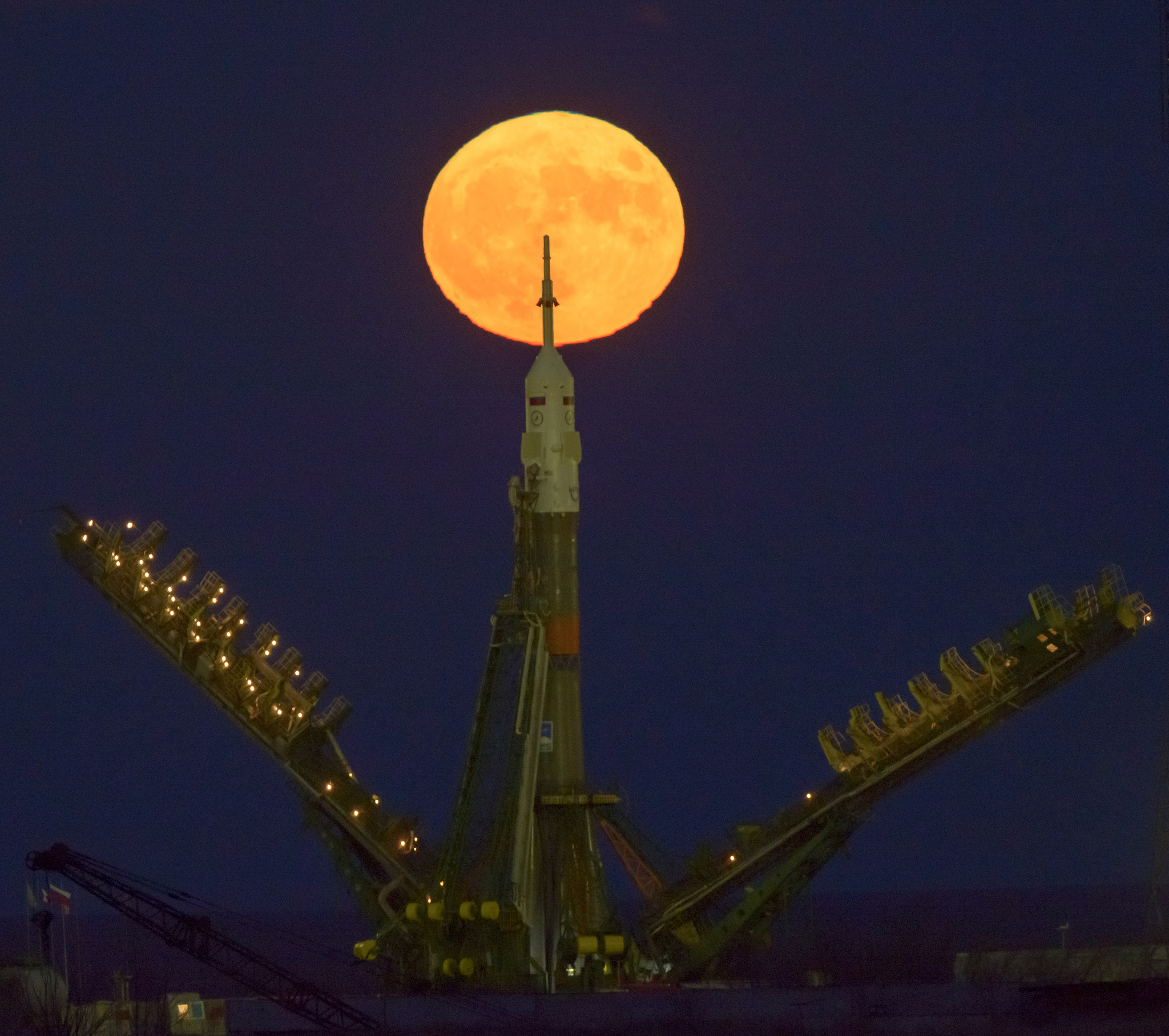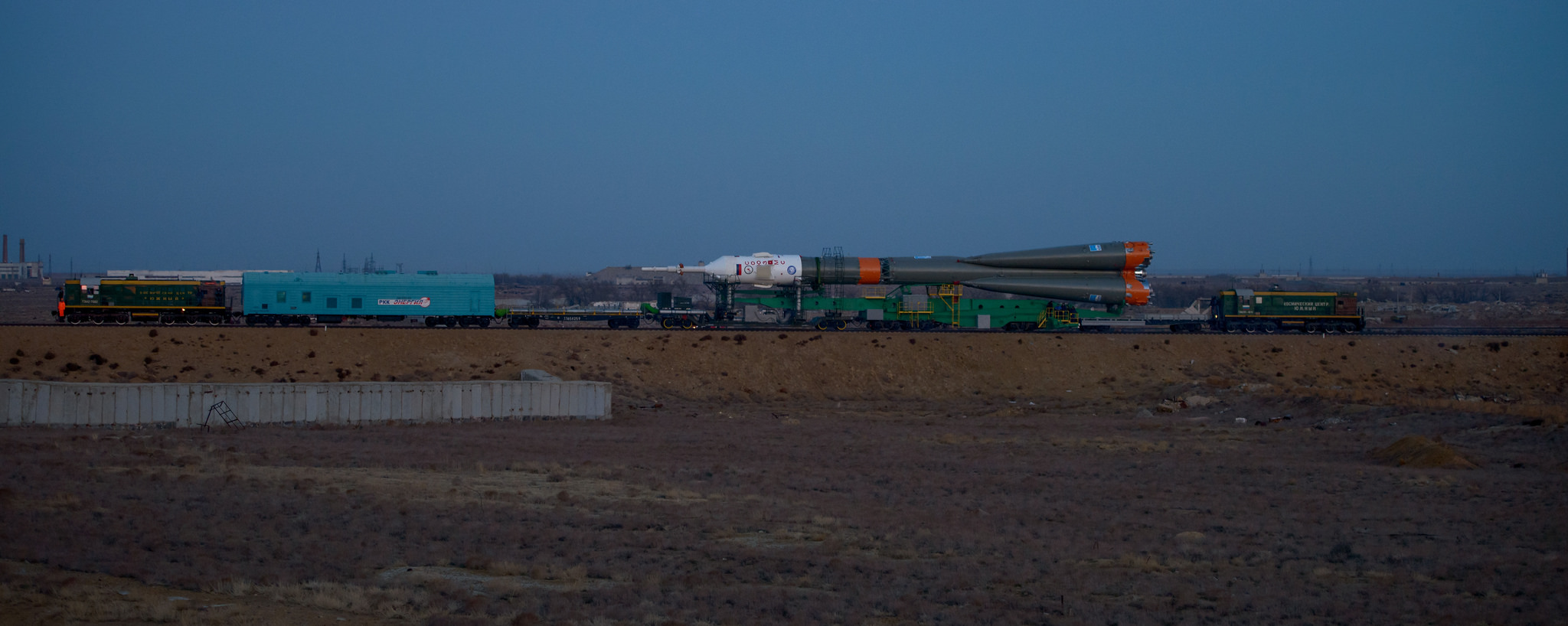Watch a Spectacular 'Supermoon' Rise Over Russia's Soyuz Spacecraft (Video)
November's full moon was the closest and brightest "supermoon" since 1948. NASA captured a stunning video of the giant, glowing moon as it rose over the Soyuz spacecraft, which will carry three crewmembers to the International Space Station Thursday (Nov. 17).
Photographers with NASA's Johnson Space Center, which oversees human spaceflight activities, shot this incredible view of the "supermoon" rising just minutes after sunset on Monday (Nov. 14) at the Baikonur Cosmodrome in Kazakhstan. Because the full moon was about 17,000 miles (27,000 kilometers) closer to Earth than it is on average, it appeared 14 percent larger and 30 percent brighter than usual.
On Monday, just hours before moonrise, a train towed the Soyuz MS-03 rocket from the Integration Facility to the launchpad. There the rocket was lifted to its upright position just in time to set the scene for a picture-perfect super-moonrise. ['Supermoon' Photos: The Closest Full Moon Until 2034 in Pictures]

The mission, named Expedition 50, includes NASA astronaut Peggy Whitson, Russian cosmonaut Oleg Navitskiy and French astronaut Thomas Pesquet. The team will blast off from the Baikonur Cosmodrome and head for the International Space Station on Thursday at 3:20 p.m. EST (2020 GMT, or 2:20 a.m. Nov. 18 Baikonur time).

Pesquet will be the first French astronaut to travel to the space station, while Whitson and Navitskiy are veteran space travelers. The three will spend six months inside the orbiting laboratory, where they will conduct about 250 science experiments not possible on Earth.
Email Hanneke Weitering at hweitering@space.com or follow her @hannekescience. Follow us @Spacedotcom, Facebook and Google+. Original article on Space.com.
Get the Space.com Newsletter
Breaking space news, the latest updates on rocket launches, skywatching events and more!
Join our Space Forums to keep talking space on the latest missions, night sky and more! And if you have a news tip, correction or comment, let us know at: community@space.com.

Hanneke Weitering is a multimedia journalist in the Pacific Northwest reporting on the future of aviation at FutureFlight.aero and Aviation International News and was previously the Editor for Spaceflight and Astronomy news here at Space.com. As an editor with over 10 years of experience in science journalism she has previously written for Scholastic Classroom Magazines, MedPage Today and The Joint Institute for Computational Sciences at Oak Ridge National Laboratory. After studying physics at the University of Tennessee in her hometown of Knoxville, she earned her graduate degree in Science, Health and Environmental Reporting (SHERP) from New York University. Hanneke joined the Space.com team in 2016 as a staff writer and producer, covering topics including spaceflight and astronomy. She currently lives in Seattle, home of the Space Needle, with her cat and two snakes. In her spare time, Hanneke enjoys exploring the Rocky Mountains, basking in nature and looking for dark skies to gaze at the cosmos.
